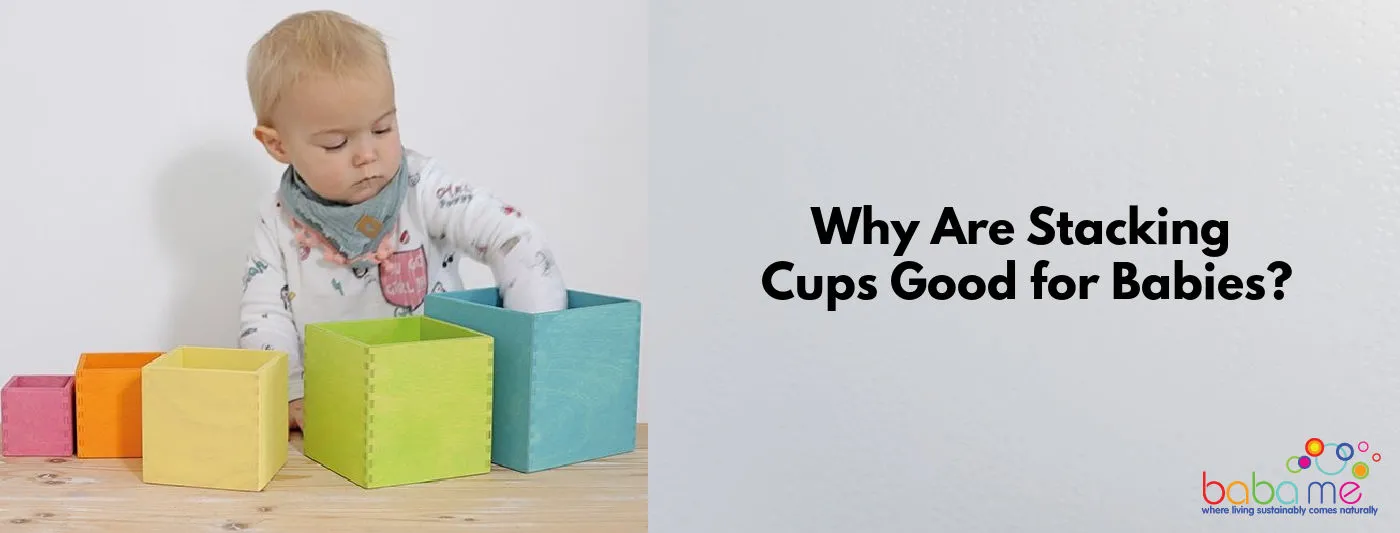Venturing into the realm of infant toys and pondering the benefits of the seemingly simple stacking cups? You’re tapping into a classic tool in early childhood development. While stacking cups might appear basic at first glance, they offer a plethora of developmental advantages for babies.
The act of manipulating, nesting, and stacking these cups plays a pivotal role in several areas of a baby’s growth.
Drawing from my expertise in infant development and play-based learning, I’ve pieced together a comprehensive guide that sheds light on why stacking cups are invaluable assets in a baby’s playtime repertoire.
Let’s delve deeper, cup by cup, understanding how these versatile toys promote motor skills, spatial awareness, cognitive development, and more, offering a well-rounded play experience for the tiniest of hands.
Benefits of Stacking Cups
Stacking cups provide numerous benefits to a baby’s learning development. These seemingly simple baby toys are good for early learning in many fun ways. Playing with these toys allow babies to develop specific areas of their bodies and brains for physical and cognitive development.
The more a baby plays, the more likely she improves her intelligence, critical thinking and problem solving skills. Moreover, stacking cups are also good toys to develop a baby’s fine motor skills, communication and language skills.
Many experts believe that stacking toys are the kind of toys that facilitate learning and a child’s development in such a way that information is arranged in patterns which makes it easier to process and retrieve.
Children who play cup stacking and building blocks with well developed thinking skills are more likely to perform better academically when they start going to school as well as having better creative play.
As soon as a baby begins exploring her surroundings using her hands, she is on a path to develop better hand eye coordination and fine motor skills. She will start playing with building blocks and stacking toys during her play time.
Any objects she can get her hands on, she will stack them on top of each other often creating a tower or a building of sorts. This becomes apparent if you offer her plastic cups and she will put one cup on top of the other.
| Benefit | Explanation |
|---|---|
| Fine Motor Skill Development | Picking up, positioning, and stacking cups refines the small muscles in a toddler’s hands and fingers, learning intentional grasp which is essential for tasks like holding a pencil or buttoning clothes. |
| Hand-Eye Coordination | Aligning and stacking cups requires coordination between visual cues (seeing) and motor skills (doing). |
| Spatial Reasoning | Toddlers learn about space, size, and orientation, understanding concepts like “inside,” “outside,” “bigger,” and “smaller” as well as learning about depth perception. |
| Problem-Solving Skills | Determining how to nest or stack the cups in the correct order promotes critical thinking and problem-solving abilities. |
| Cause and Effect | Experimenting with the cups, like seeing what happens when a smaller cup is placed over a bigger one, introduces the concept of cause and effect. |
| Cognitive Flexibility | Stacking cups can be used in various ways—stacking, nesting, filling, pouring—encouraging toddlers to think flexibly and adaptably. |
| Mathematical Concepts | Through stacking and nesting, toddlers are introduced to foundational math concepts such as sequencing (from smallest to largest), counting, and basic geometry. |
| Water and Sand Play | Stacking cups are often used in bathtubs or sandboxes, teaching concepts like volume, buoyancy, and weight. |
| Language Development | Parents and caregivers can introduce vocabulary related to size, color, position, and numbers during play with stacking cups. |
| Creativity and Imagination | Beyond stacking, cups can become pretend play items, like tea cups for a teddy bear’s tea party, fostering creativity and imaginative play. |
| Social Skills | When played with peers, stacking cups can teach sharing, taking turns, and collaborative play. |
| Concentration | Stacking and nesting cups in the right order requires focus and attention, helping to extend a toddler’s attention span. |
Fine Motor Skills
When a baby starts to pick things up using her hands, she has not yet developed her dexterity and fine motor skills. You will notice that instead of using her hands and fingers to pick things up, she uses her entire hands to explore and hold objects.
This is the reason why fine motor skills are important to develop at an early age. Fine motor skills are fine tuned movements of the hands and fingers that allow us to perform certain actions like using a pair of scissors, buttoning, zipping and more.
These set of skills allow children to hold and manipulate objects using their hands and fingers.
There are many ways to develop a child’s fine motor skills. One of the good ways is to offer her stackable cups or stacking rings or other toys.
Playing with these toys allows babies to practice using their hands and fingers to pick up and stack the cup on top of each other. They also need their hands and fingers to manipulate the cups and reposition them.
There are other things you can get which are just fun in reality, maybe check out some of our wooden toys for babies, there’s a full range of stuff you can get.
Problem Solving Skills and Cognitive Development
These seemingly simple toys present a simple challenge to babies – how can they stack these cups on top of each other. You can either let your baby find out how to stack cups on top of each other or you can teach her how to do it.
Either way helps her develop her problem solving skills which would allow her to assess simple problems during her play time. Practicing problem solving is also a good way to increase your baby’s brain power and helps with her cognitive development.
With solid problem solving skills and cognitive growth, babies would be able to face challenges and problems when they grow older and become less dependent.




